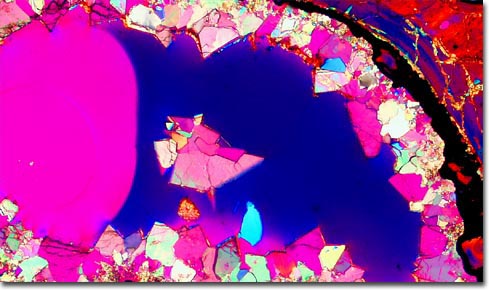|
During the fossilization process, mineral replacement often occurs, substances such as calcite and dolomite filling in pore spaces of hard parts or, in the case of petrification, actually replacing original organic matter. Abundant and widespread, dolomite and calcite, along with the closely related mineral known as aragonite, are believed to comprise about 15 percent of the sediments and sedimentary rocks on Earth. The most common of these carbonate minerals is calcite, which typically exhibits a hexagonal crystalline structure and is white or colorless in its pure form, although it is often found in various hues due to the presence of impurities, such as iron or manganese. A calcium magnesium carbonate, dolomite may also be white, but the mineral with a vitreous to pearly sheen may be gray, brown, or red as well.
|
